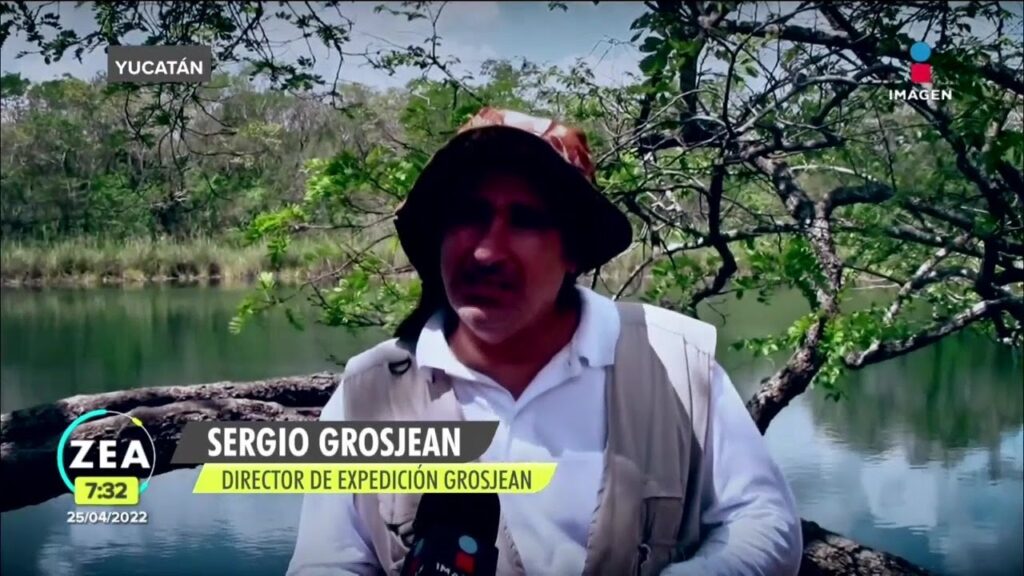Startling Discovery: 700 Kilos of Trash Found in a Mexican Cenote
In a shocking environmental revelation, explorers and environmentalists have unearthed a staggering 700 kilograms of trash from one of Mexico’s renowned cenotes. These natural sinkholes have been revered for their crystal-clear waters and mystical connections to the ancient Maya culture, making the find not only alarming from an ecological standpoint, but also culturally disheartening.
The assortment of waste was diverse, including items such as plastic bottles, aluminum cans, and even household appliances, hinting at the neglected fate of these historical natural wonders. This discovery has sparked intense conversations about the sustainability and respect—or lack thereof—that we hold for natural treasures.
Amidst the backdrop of lush forests and a vibrant ecosystem, the cenote in question resembled less of a pristine sanctuary and more of a makeshift dump yard. The gravity of the situation becomes even more pronounced when considering cenotes’ roles as a part of a larger network of underground rivers that provide fresh water to the Yucatan Peninsula.
Dedicated teams of volunteers and activists have since responded to the call to action, initiating cleanup projects aimed at restoring the cenote to its natural state. Their tireless efforts showcase a community’s resilience and commitment to preserving the environment for future generations.
While the cleanup continues, this unfortunate scenario serves as a stark reminder of the ongoing challenges faced in the battle against pollution. It ignites crucial discussions on the implementation of more stringent environmental policies and the enforcement of existing regulations to prevent such neglect in the future.
The Environmental Impact: Over 100 Electric Meters Among the Cenote Trash
The cenotes of Mexico, natural sinkholes and underwater caves, are highly regarded for their breathtaking beauty and as sacred sites of the Mayan civilization. However, the discovery of over 100 electric meters in the depths of these crystalline waters is a staggering indication of the environmental challenges faced by these ecological treasures. These discarded meters are not only a clear sign of pollution but also threaten the delicate aquatic ecosystems, which host a variety of unique flora and fauna.
The presence of such waste in the cenotes has spurred local communities and environmentalists to call for immediate action. These ancient pools, once pristine, are facing unprecedented levels of contamination. The situation highlights the broader issue of waste management in areas witnessing rising tourism and urban expansion. The electric meters, along with other debris like plastic bottles and consumer waste, signify the pressing need for sustainable tourism practices that protect rather than exploit these natural wonders.
Efforts to clean and preserve cenotes are underway, but the discovery of electric meters—often linked to illegal dumping—poses serious questions about existing regulations and their enforcement. Local authorities, in partnership with environmental groups, are intensifying their campaigns to raise awareness about the long-term damages caused by such reckless disposal of waste. The goal is not only to restore the ecological balance of the cenotes but also to ensure that these environments remain unspoiled for future generations to marvel at and enjoy.
Preserving Mexico’s Natural Beauty: The Fight Against Cenote Pollution
Mexico is home to some of the world’s most stunning natural wonders, among which cenotes hold a place of prominence. These natural sinkholes, resulting from the collapse of limestone bedrock that exposes groundwater underneath, are not only a testament to nature’s artistry but are also of great cultural and historical significance to the Mayan civilization. However, the pristine beauty of these natural pools is at risk due to increasing pollution. Efforts to preserve the cenotes involve a multi-faceted approach, focusing on sustainable tourism, proper waste management, and local community engagement.
Sustainable tourism is key to preserving cenotes, as these attractions draw countless visitors each year. Governing bodies and environmental organizations are working to implement regulations that limit the number of visitors to prevent overuse, which can lead to erosion and contamination. Tourists are also educated on the importance of not using sunscreens or body lotions before swimming in cenotes, as these products can create a film on the water that harms the ecosystem. By fostering an environmentally conscious mindset among visitors, the impact on these delicate environments can be significantly reduced.
Local communities play a critical role in maintaining the cleanliness and integrity of cenotes. Many community-led initiatives focus on proper waste management practices, ensuring that trash and sewage are effectively treated so they do not pollute the cenotes. Through workshops and educational programs, residents are taught about the consequences of contamination and the importance of keeping the cenotes clean for future generations. This empowerment of local communities underlines the broader importance of community involvement in environmental conservation efforts.
How Can We Prevent Trash Accumulation in Nature’s Wonders?
Traveling through Mexico’s vast and diverse landscapes, from the arid deserts of the north to the lush rainforests in the south, we are all struck by the natural beauty these lands have to offer. Mexico’s nature wonders are a testament to the country’s rich biodiversity and immense cultural heritage. As we embrace the spirit of adventure, it’s crucial to consider the environmental footprint we leave behind. Trash accumulation is a pressing issue that threatens to tarnish the pristine condition of these areas. Here, we’ll to explore practical ways in which travelers can minimize their impact and help keep Mexico’s nature spots clean and undisturbed for future generations.
One of the most effective strategies for preventing trash accumulation is the implementation of a “Leave No Trace” philosophy. This means that whatever you bring with you into nature, you should take back out. To make this easier, always plan your adventure with eco-friendly practices in mind. Reusable containers, biodegradable products, and minimal packaging can drastically reduce the amount of waste you produce during your trip.
Another aspect to consider is the active participation in cleanup initiatives. Many locations offer programs where tourists can engage in picking up litter and learning about the local ecosystem. By joining these efforts, not only are you directly contributing to preserving the natural beauty of the area, but also spreading awareness and inspiring others to participate in these activities.
Eco-conscious travel is not just about reducing what we leave behind, but also about understanding and respecting the local cultures and economies. Supporting eco-tourism projects and local businesses that prioritize sustainability can promote a larger, community-driven movement towards maintaining environmental health. When these businesses flourish, they serve as models for others to follow, creating a ripple effect of eco-friendly practices across the tourism sector.
It’s also important to educate yourself and others about the delicate balance of ecosystems that you will encounter in Mexico. Knowledge is power, and understanding the long-term effects of pollution can encourage travelers to make smarter, environmentally friendly choices. Share your experiences and the measures you’re taking to prevent trash accumulation through your conversations and social media. Inspire your audience by showing them beautiful, untouched landscapes and explain the steps you took to leave no trace. Together, by adopting mindful practices and fostering a collective sense of responsibility, we can ensure that Mexico’s natural wonders remain intact for the awe and enjoyment of adventurous spirits for years to come.



